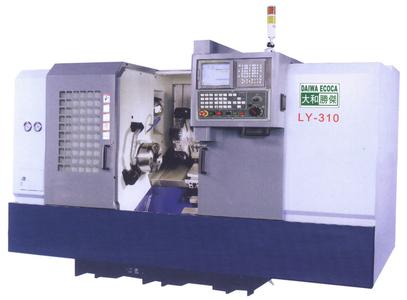 Although China's remanufacturing industry has great potential for development, due to lack of understanding, it still faces bottlenecks such as weak policy support, imperfect legal systems, lack of market supervision, and weak key technology R&D capabilities.
Although China's remanufacturing industry has great potential for development, due to lack of understanding, it still faces bottlenecks such as weak policy support, imperfect legal systems, lack of market supervision, and weak key technology R&D capabilities. Remanufacturing Industry Introduction
The remanufacturing industry refers to an industry that uses the technological means of repairing and renovating waste products on the basis of the original industry. It is based on the product life cycle theory as a guide to achieve the performance of waste products to improve the industry as a goal.
At present, most of the machine tools used in China are ordinary machine tools. The number of ordinary machine tools is huge, and safety issues are highlighted. Therefore, the security issue has become a major obstacle to its development. Increase safety performance, improve the intrinsic safety level of the machine, solve the problem of low degree of numerical control, frequent occurrence of personnel injury accidents, low safety level, and low production efficiency.
After the ordinary machine tool completes the transformation of the numerical control, it can greatly improve the machining efficiency and automation and intelligence of the machine tool. The possibility of operator's contact with dangerous parts is reduced; the operating system and operation interface are more and more in line with ergonomic requirements, which can effectively reduce the error rate of operators and reduce the accidents caused by mistakes. After the transformation of the machine tool by CNC, the safety performance has been significantly improved, and the accident rate has been significantly reduced, which will bring huge safety benefits.
Compared with the purchase of new machine tools, the transformation of ordinary machine tools in numerical control is especially obvious for large and special machine tools. Relevant experts said that the transformation of large-scale machine tools generally requires only 1/3 of the cost of new machine purchases. At the same time, the numerical control transformation can also save energy consumption and pollution emissions due to all updates. The transformation and updating of a large number of ordinary machine tools can create a new market demand of more than one hundred billion yuan, which can play a certain role in maintaining economic growth.
According to past experience in retrofitting, after the transformation of ordinary machine tools by CNC, the efficiency of the machine tool has been significantly improved. The original one machine tool needed a person to control, after transformation one worker can control two machine tools at the same time. After the machine tool was modified, the machining accuracy was greatly improved, and the scrap rate caused by human error was significantly reduced. Moreover, the labor intensity of workers is reduced, labor is saved, trial production period and production cycle of new products are shortened, and huge economic benefits are brought to the company.
From the perspective of the development of the machine tool industry, remanufacturing is the most effective method for reusing CNC machine tools. At present, there is a huge market for domestic CNC machine tools, and new technologies should be used to transform traditional industries. This will not only improve technological innovation but also rapidly develop emerging industries.
Short for [reinforcing bar," rebar is refers to metal – usually steel – that`s used to help increase the tensile strength of concrete for a variety of needs, including many of the most common construction types you see every day.
Concrete is known to be weak in the areas we just mentioned, at least compared to steel and other metal types. If this reinforcement was not used, these structures would at-risk of falling apart.
Rebar usually will be built so the metal component is not visible within the structure. Rather, it will be buried within the concrete. It`s usually made with ribs rather than smoothly, allowing it to avoid slippage within its structure.
How Rebar is Made
As we noted above, the most common material for rebar use is steel, which is used because of its excellent tensile properties. It`s often made from forms of recycled steel, which will be melted down using an electric arc furnace, cooled using billets, and then stored until it`s needed.
From here, billets can be reheated to an elevated temperature and fed through extrusion tools, then necked down until its proper size is reached. Finally, it will be tooled to create the proper ribbing, which we noted above is in place to prevent slippage within concrete. Then it will be sheared to the proper length, and it`s ready to go.
Steel Bar Rebar, Deformed Steel Bar
Shandong Guanzhou Iron and Steel Group Co., Ltd , https://www.shansteelsupply.com